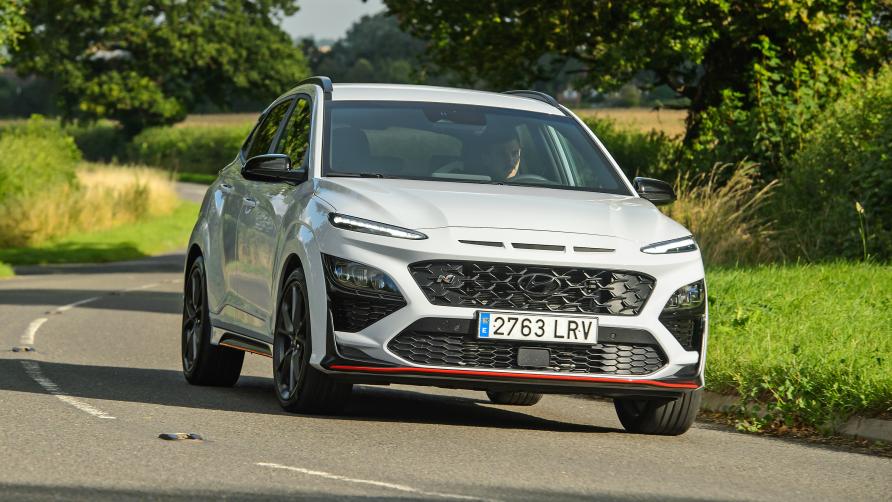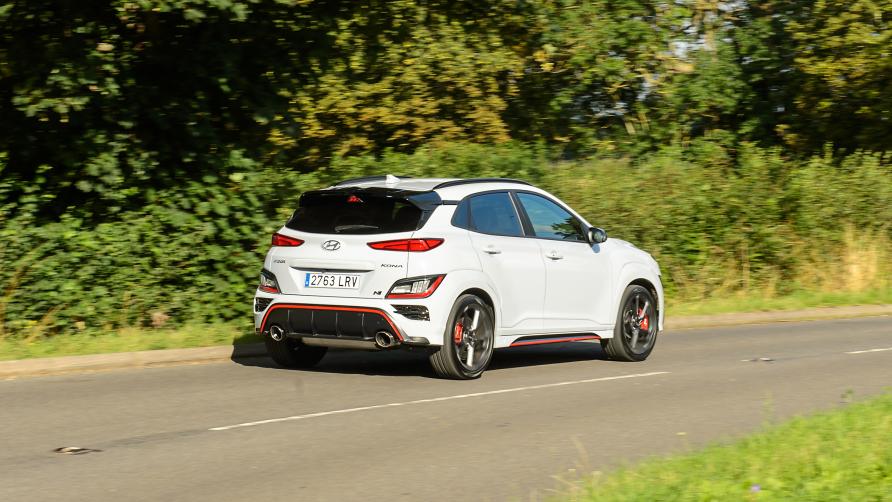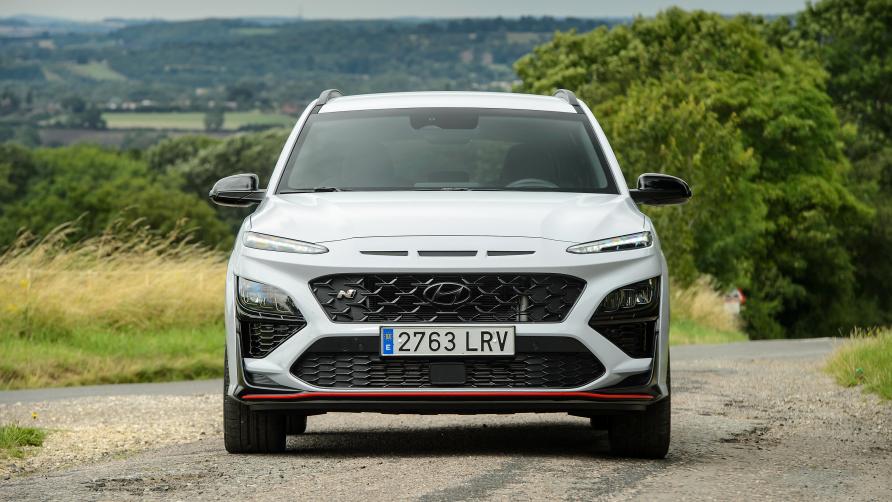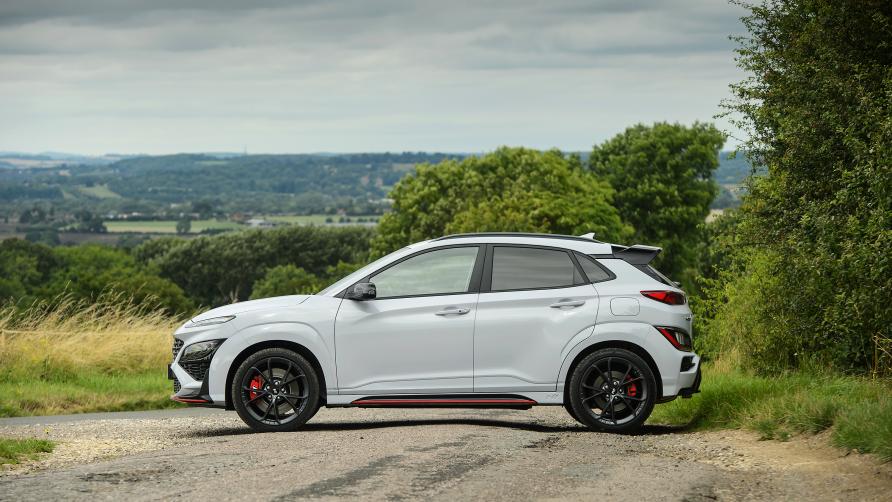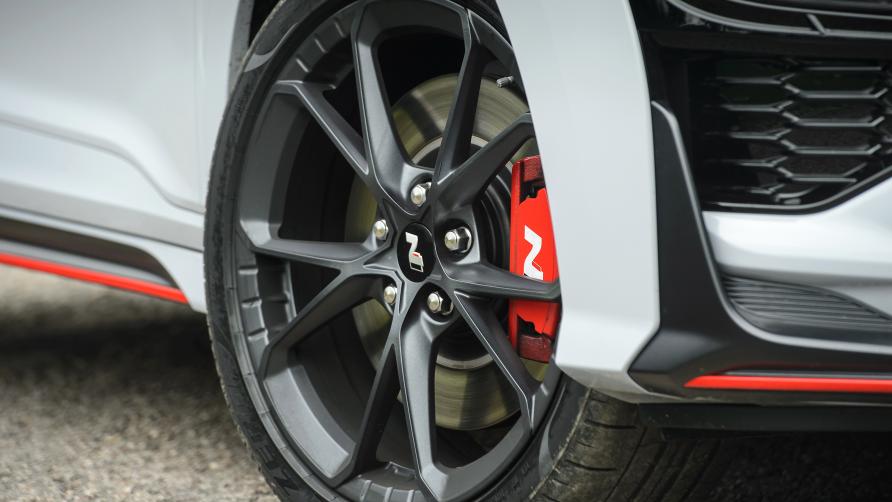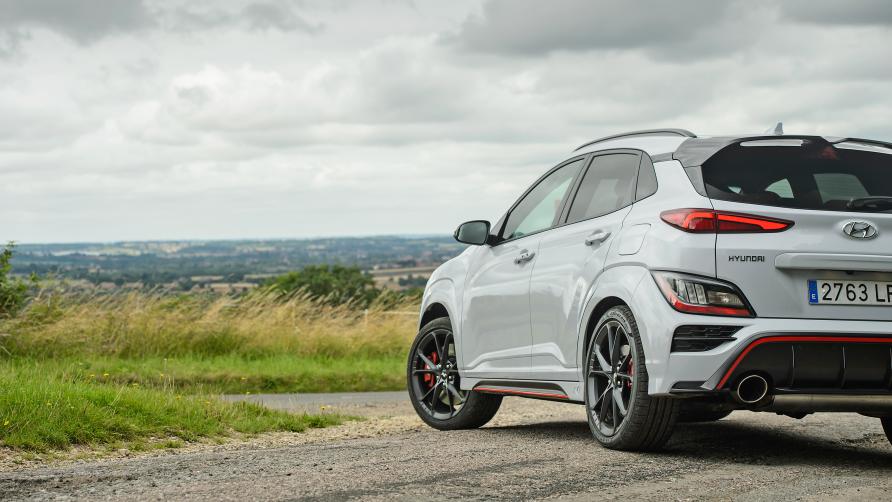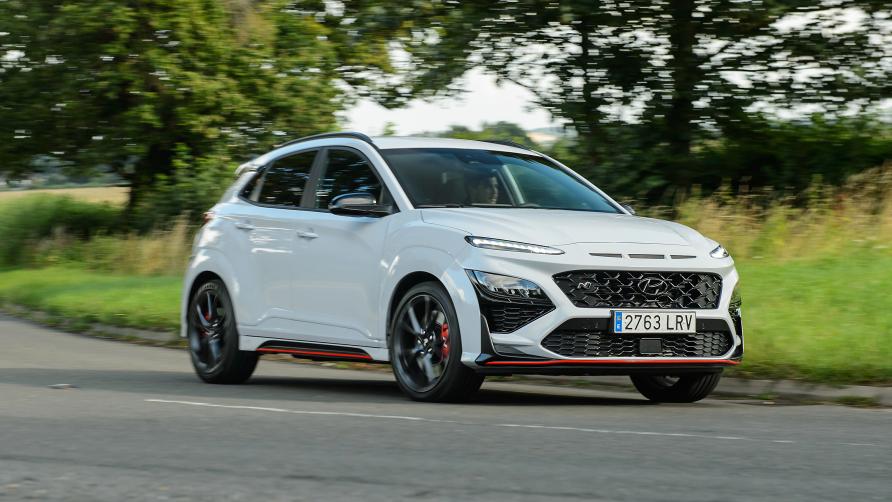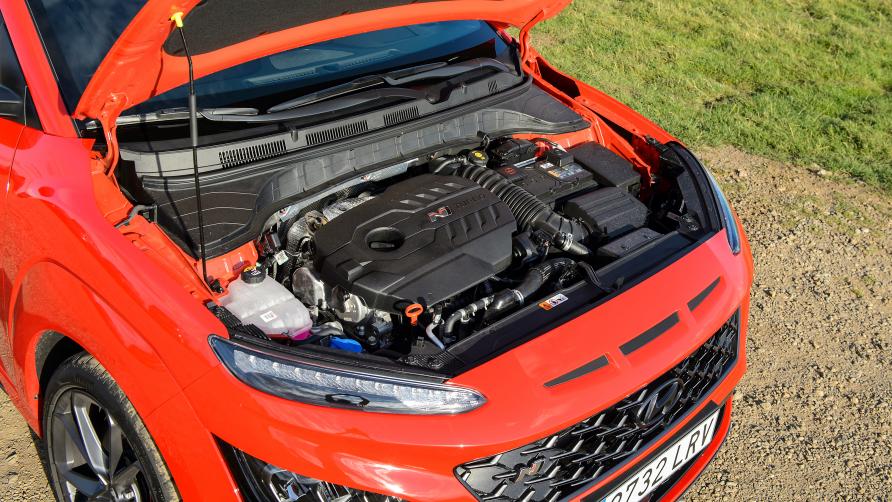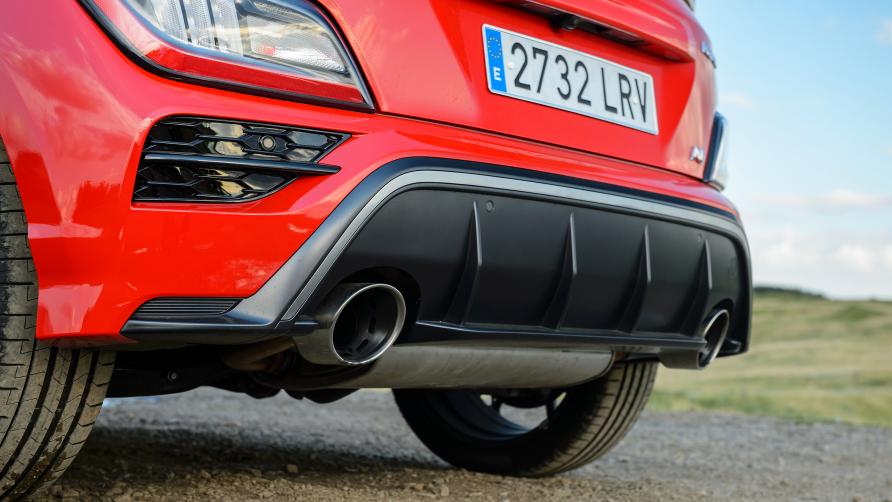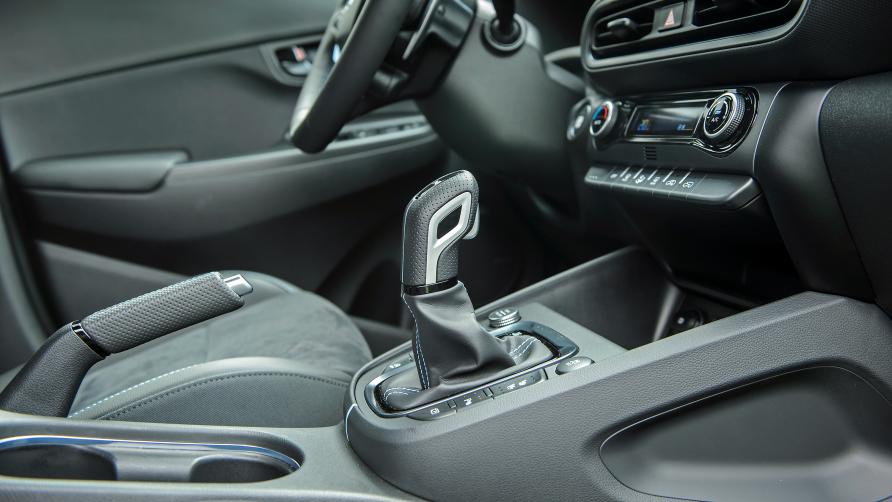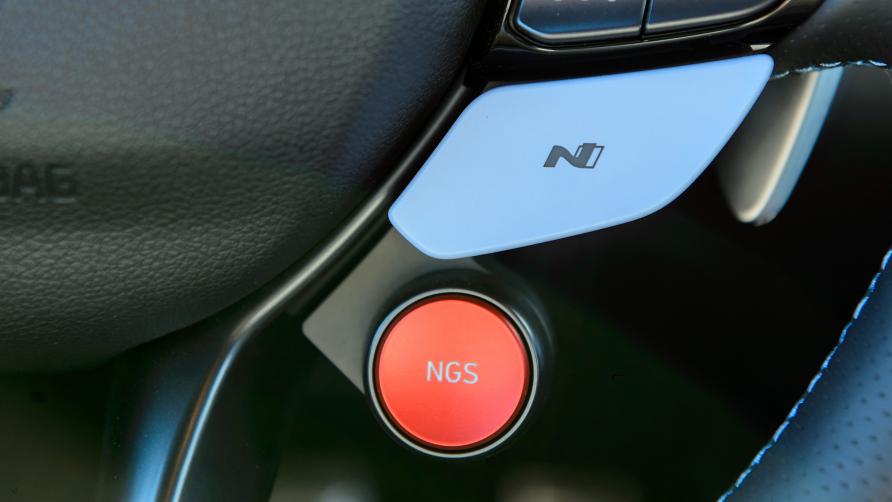Hyundai Kona N review: a crossover with N's magic touch
Hyundai Kona N review: is this the hot crossover to disrupt the German status quo?
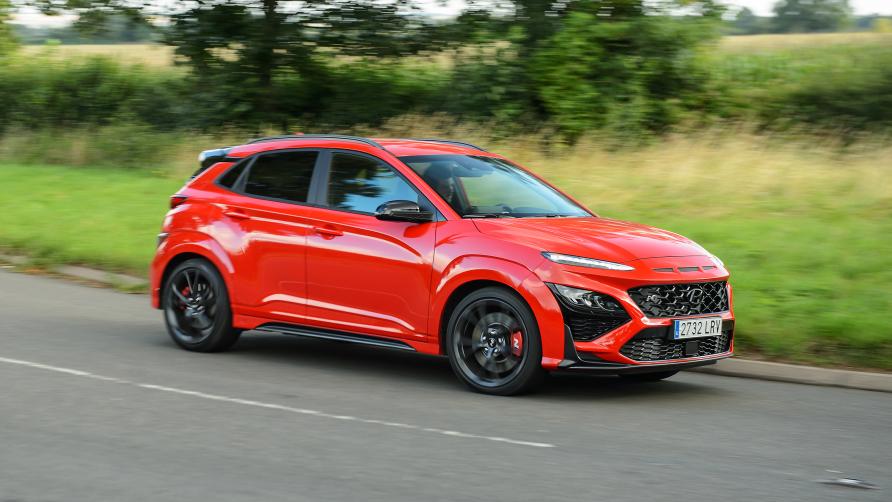
OVERVIEW- WHAT IS IT?
It’s the inevitable: a performance SUV from Hyundai’s burgeoning N brand. After nearly four years with just one model in Europe, the superb i30N hot hatch, the South Korean brand's feisty performance offshoot has added another two almost at once. Just as the i20N hot hatch has gone on sale – a healthy waiting list soon following – we now have this, the Kona N.
Not only is it inevitable, though, it’s actually kinda welcome. While the small crossover crowd is a largely uninspiring place for a car enthusiast to shop, the stock Kona stood out at launch. Not only for its stark, amphibious front end, but for driving uncommonly tidily for its class. Albert Biermann was snared from BMW’s M Division not only to make the i30N (and follow-up Ns) fun to drive, but to make the rest of the Hyundai and Kia conglomerate’s cars handle with a base level of competency.
Which is precisely what the Kona did, especially in its wholly convincing Electric form. But there’s little semblance of saving the world distilled into this, a car that may be the last N product launched with internal combustion as its sole power source. All hints are that N will soon be electric, potentially making this near-300bhp chonk something of an unexpected send off.
AN APPROPRIATE ONE, THOUGH?
It all looks good on paper. The powertrain from the Hyundai i30N is squeezed into the slightly smaller (though 50kg heavier) Kona, which means it stays front-wheel drive. That helps keep weight acceptable at 1.5 tonnes. A 2.0-litre 4cyl turbo petrol engine provides 276bhp and 392Nm of torque, yielding a 0-100kph time of 5.5 seconds and a 240kph top speed.
If you’re buying into the SUV world for a pretence of off-roading nous, then supplementary to an N-honed stability control setup is a dial of sand, snow and hill descent modes which you’ll almost certainly never use. It sits beside the selector of your only gearbox option: an eight-speed twin-clutch paddleshifter with launch control and a multitude of extra modes – all with silly names like N Grin Shift – to help spice up the fact there’s no manual option.
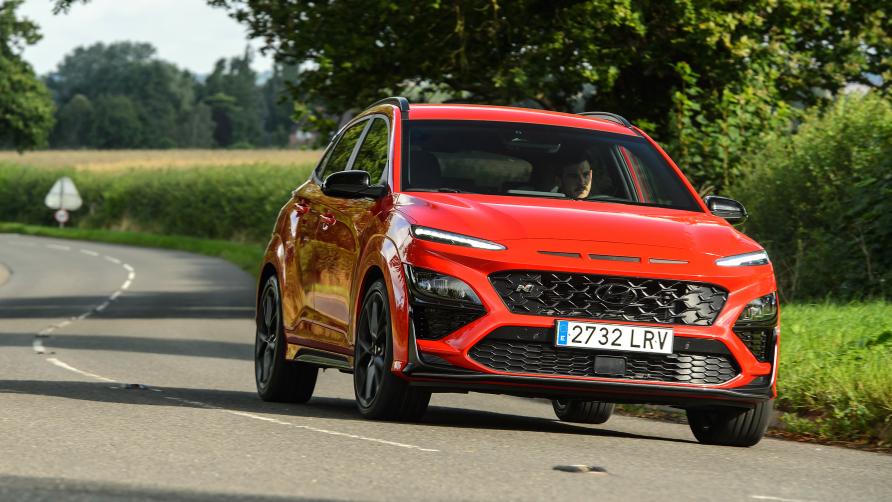
SHOULD I BE UNDULY BOTHERED?
Nope. Ignore the tinsel and this is a genuinely great twin-clutch transmission, one that’s evidently been developed by car nerds before having its functions named by marketeers. It shifts quickly and smartly and is probably more impressive left to its own devices than when you start tugging at the paddles yourself. Leave things alone and you’ve a better chance of eking out fuel economy, infamously an N division weak point thus far. Hyundai claims 194g/km of CO2 and 7.1 l/100km– expect the latter to fall into the mid 20s the moment you get excitable.
The performance SUV may be a modern phenomenon – titchier ones like this, especially – but plenty about the Kona is old-school. Turning the ESC off really does turn it off and there’s a traditional manual handbrake. And Hyundai has done a proper engineering job on it rather than just pump up the wheel size and drop the suspension; it actually rides no lower than a regular Kona but boasts additional weld points on its bodyshell and a limited-slip differential as standard. Oh, and it completed 489 development laps (equating to 10,152km) of you-know-where to properly earn that N on the back. It’s a proper job.
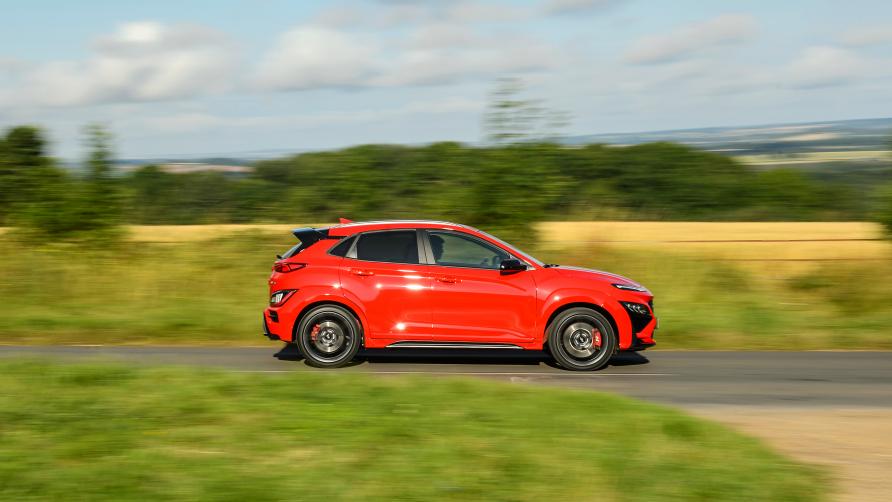
WHAT'S THE VERDICT?
While we can expect future N Division cars to be electric (and perhaps hydrogen) powered, it’s currently providing an antidote to swelling technology by making rapscallion little cars like this; cars that draw their driver into mischief with little persuasion. Just with all of the active safety tech a family SUV needs a simple button press away.
It’s joyously silly. And if you can cope with mildly insatiable thirst and a firm ride, it ought to be more than capable of handling everyday life too. ‘Most fun small performance crossover on sale’ may sound like faint praise, but it’s a title true of the Kona N either way.
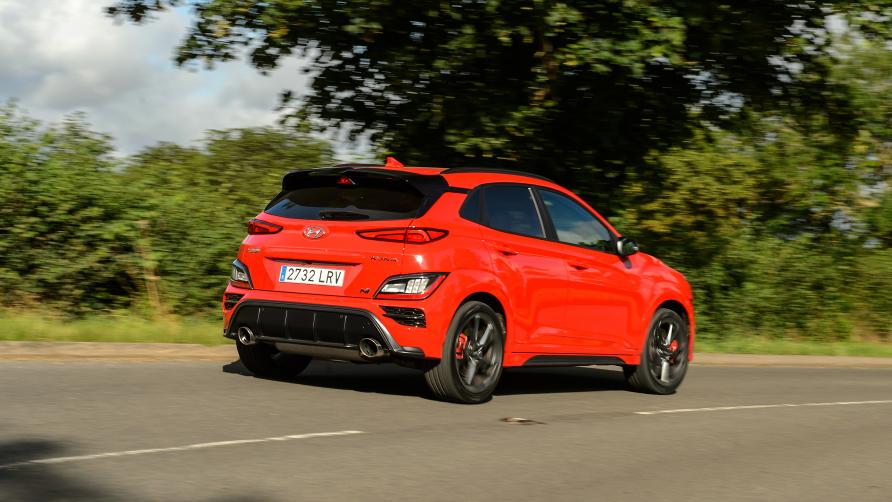
DRIVING-WHAT IS IT LIKE TO DRIVE?
In essence, this is an i30N hot hatch that’s had its wheelbase shortened and its centre of gravity nudged up. And it drives just as the recipe suggests: an already roguish character is now even more cartoonish.
The DCT gearbox is a sophisticated item, and with eight nicely stacked ratios, you can potter along quietly and cruise at 2,000pm should you wish. But the powertrain is always gagging to really let loose, and this is a car that falls easily out of its shackles as soon as you start stiffening its suspension or loosening its stability control.
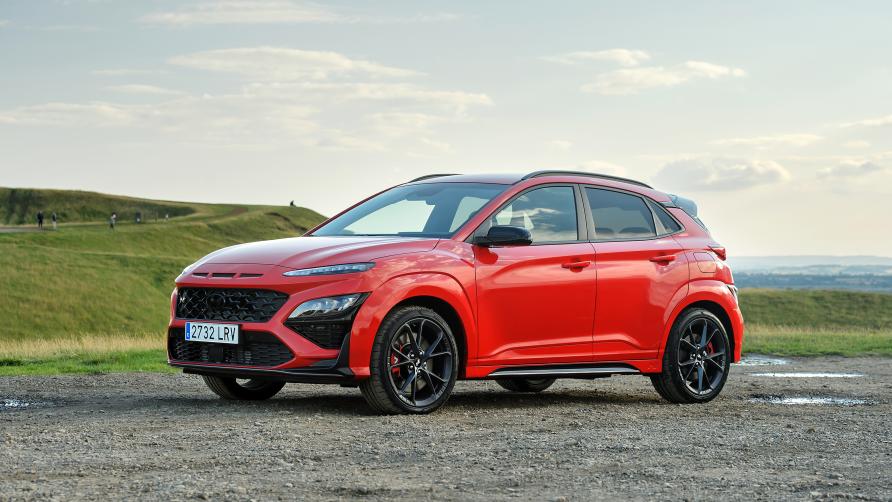
SO IT’S FUN?
There’s a mobile rear end should you lift off the throttle or brake exuberantly into a turn – it’s a right old laugh without ever giving you the scaries. It’s like a boisterous little puppy scurrying across the lino into the kitchen, with no malice to its excitement whatsoever.
If this all sounds like an irrelevance, then consider that its innate sense of humour really shows up the studious side of its mostly VW Group rivals. Only a Ford Puma ST feels anything like as daft as this, and it’s down by nearly 80bhp.
I BET THERE’S A PRICE TO PAY…
Correct. This is mercilessly stiff, as has been the N Division way thus far. The suspension has three settings, but ‘Normal’ feels like where the middling ‘Sport’ ought to be, while ‘Sport+’ is something you’ll try once and never revisit, we suspect.
There’s much, much customisation possible within its numerous driving modes, but it’s all relatively intuitive and you can corral two favoured setups to access with a quick steering-wheel button prod – a prod which the Kona N’s digital dials actually prompt you to do when the car’s forward-facing camera spots a bendy road sign. Told you it was daft.
You’ll want the limited-slip differential in its sportier setting if you’re to avoid torque steer. The gearbox has four different levels of ferocity; left in Drive in its second-most sporty mode, you might never need to pull a single paddle, so good is it at changing down into corners and up out of them. A late, impromptu manual downchange is always instant and accompanied with a naughty growl of assertive rev-matching, though, and will make you smile almost as much as if you’d done it with a traditional manual ‘box. So don’t abandon the paddles entirely, no matter how plasticky Hyundai’s made them.
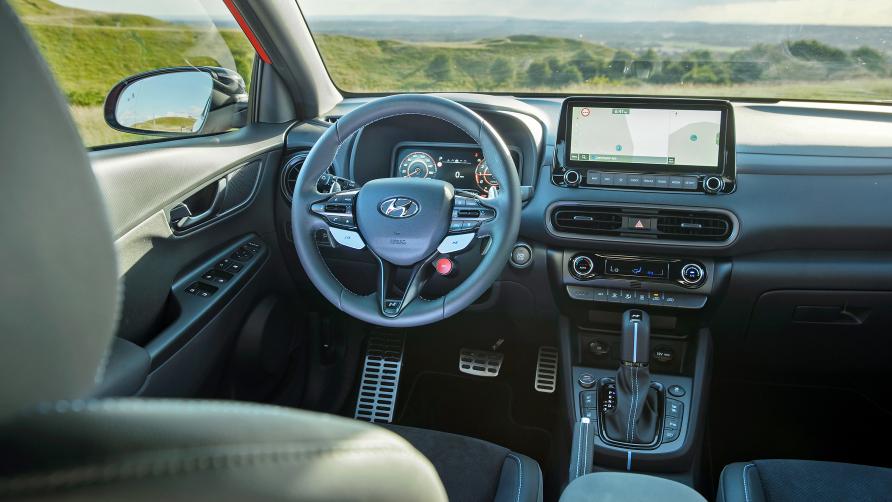
INTERIOR-WHAT IS IT LIKE ON THE INSIDE?
There are digital dials where the i30N’s have remained joyously analogue. But at least Hyundai has fully leant into the infinite world of possibilities they open up rather than just recreating a traditional tachometer and speedometer display as your only real option (ahem, BMW).
So a chintzy display of flames runs around the rev counter as you start up and the head-up display looks fully gamified when you’ve prodded the car into one of its gnarlier driving modes, with horizontal revs and a quirky gear display. Handy when you’ve eight to choose from and an engine so torquey, you might have a few more downchanges to make into a corner than you anticipated.
You just have to engage with – and enjoy – the silliness. The same ‘warning’ beep that signifies icy roads or low tyre pressures also alerts you to S-bend signs with a suggestion of N mode if you’re mooching around with the car in something more docile. In the i20N hot hatch that feels hooligan enough; in something with an automatic gearbox, family friendly proportions and hill-descent control, it’s more rambunctious still. Just go with it.
MORE PRACTICAL STUFF, PLEASE.
You get a pair of big hugging sports seats, and in front of them is a nicely laid out interior, offering the perfect blend of digital and physical touch points. So the nav, media and drive mode screens are all swiftly navigated on touchscreen, while physical climate controls sit below and there’s a big circular ESC off button right near the pleasingly normal gear selector and manual handbrake. Many of those three things are increasingly rare in anything performance-oriented these days, never mind a small SUV with its PE kit on. There’s plentiful room in the back and 361 litres of luggage space seats up, or 1,143 with them folded – just like any other Kona. The perks of staying front-wheel drive continue.
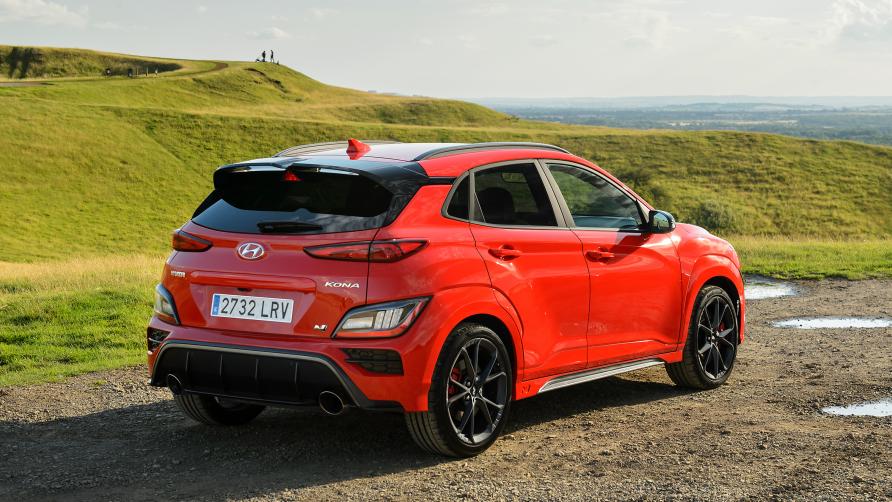
BUYING-WHAT SHOULD I BE PAYING?
Prices start at £35,395 (RM205k). And practically finish there, too, for Hyundai has lobbed just about everything imaginable inside the Kona N and options list spending might be limited to colour. Red is standard, with a bunch of whites, blues, blacks and greys another £565 (RM3.2k).
If the price looks lofty for a small SUV, then consider that this is actually £300 (RM1.7k) cheaper than an i30N with the DCT gearbox fitted. And it’s much less than its most obvious rivals: an Audi SQ2 starts at £38k (RM221k), a Cupra Formentor with the correct engine at £41k (RM238k), the VW T-Roc R at £42k (RM244k). The BMX X2 M35i is a fairly eye-watering £47k (RM273k) before options.
The Kona is a completely different proposition to all four, differentiating itself from them by shunning not only rear driveshafts, but a thick layer of polish to end up much more of an extrovert. It’s smaller, lighter and simply more fun to be around. Mind they’ll all be significantly less thirsty while riding more amiably day-to-day, too. Hyundai claims over 30mpg, but expect high 20s in mixed driving. Low 20s if you’re making mischief.
Perhaps a more vociferous foe is the Ford Puma ST. On paper it’s 80bhp down on the Kona N, but it won’t feel much slower in reality – and it’s also £29k (RM168k) pre-options. It too is a right old laugh if you can tolerate the ride. Pop a £675 (RM3.9k) Mountune kit on it and you’ve a 256bhp hot hatch on stilts for under thirty grand.
